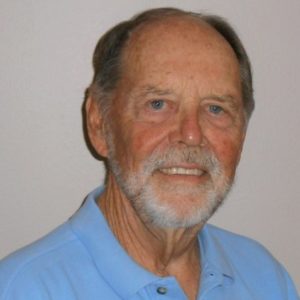December 2020
Honoring Yesterday – Protecting Tomorrow
Vol. 51, No. 12
What’s Inside?
RESDC Virtual Holiday Fest 2020
Supreme Court May Uphold Obamacare
President’s Message
Pension Facts
Theo And Evelyn Yakel Scholarships
2021 RESDC Budget
RESDC YouTube Channel
Board Member Profile Merrill Roach
Welcome New Members
Changes to See’s Candy Certificates
Mixed News And Mixed Feelings About COVID-19
RESDC Holiday Schedule
Recent Events
Member Share
DECEMBER CALENDAR OF EVENTS
10—(Thurs.) RESDC Virtual Holiday Fest 2020
Via Zoom Web Conferencing, 11:00 am
17—(Thurs.) Board of Retirement Mtg., 9:00 a.m.
24—Jan. 1, RESDC Closed for Holidays
We will return to work at 9:00 a.m. on Monday, Jan. 4
View the NETWORK
as a printable PDF
Are you on social media?
Stay connected with us!
![]()
![]()
![]()
QUOTE OF THE MONTH
The best time to plant a tree was 20 years ago. The second best time is now.
▪ Chinese Proverb
RESDC VIRTUAL HOLIDAY FEST 2020
When: Thursday, December 10, 2020, 11:00 am
Where: Virtual – Via Zoom Conferencing
Due to the COVID-19 pandemic, we will not be hosting our normal Annual Holiday Luncheon. But as we “Zoom” into the virtual presentation world, we are excited to be hosting a virtual holiday fest via Zoom. We have put together a great program that can be seen by RESDC members nationwide. You must register in advance and you must attend the Zoom event to be eligible to win a variety of $25 and $50 gift cards as opportunity drawings.
For more details on how to access Zoom and to register for this great event, visit us at: www.resdc.net/events.
Program:
-
- Opportunities to win several $25 and $50 gift cards (must register & be present at Zoom event to win)

Tracy Sandoval
- President’s Welcome
- Entertainment from Terry Daly
- Approval of the 2021 budget
- Ratification and oath of office for RESDC Board of Directors
- RESDC 2020 highlights
- A special keynote address from new SDCERA Chief Executive Officer Tracy Sandoval
- Opportunities to win several $25 and $50 gift cards (must register & be present at Zoom event to win)
We hope to see you there! □
SUPREME COURT MAY UPHOLD OBAMACARE
More good news for retirees may be coming.
“US Supreme Court justices sounded ready to uphold the Affordable Care Act for the third time,” announced a November 9th Los Angeles Times article by David Savage and Noam Levey. The Affordable Care Act is more commonly known as Obamacare.
The two reporters were talking about a long scheduled court hearing held Tuesday morning to decide whether Obamacare should be determined totally unconstitutional because Congress has eliminated a tax penalty in the law for those who did not have health insurance coverage. If determined entirely unconstitutional by the Supreme Court, it would mean elimination of coverage protection for people with preexisting conditions, elimination of government subsidies for low and moderate income policy holders, elimination of coverage for children of policy holders until they’re 26 years of age, and many other provisions.
There was also severe questioning by the justices about whether the Texas plaintiffs had standing to sue, which usually requires a showing that they have actually suffered a loss. Some justices were doubtful.
This suit being reviewed by the Supreme Court was filed by Texas Republican lawyers, and joined by numerous Republican attorney’s general and the Trump administration, who argued that the constitutionality of Obamacare had been fatally damaged by the elimination of the coverage mandate.
The Supreme Court did not reach a final decision on Tuesday, but two conservative justices, Chief Justice John Roberts and Justice Brett Kavanaugh, spoke skeptically about the arguments of proponent lawyers asking for the unconstitutionality ruling. And new Justice Amy Coney Barrett reportedly suggested she didn’t see a reason for striking down a broad law because of one flaw.
Savage and Levey point out that when joined by three other more liberal justices on the Court, the constitutionality of Obamacare could be upheld, saving Obamacare. It’s not clear when that Court ruling is expected. The final court ruling is expected sometime before June 2021. □
PRESIDENT’S MESSAGE – THE CORONAVIRUS AND THE ECONOMIC IMPORTANCE OF STATE AND LOCAL GOVERNMENT
By Stan Coombs
 RESDC begins the 2020 holiday season with the rest of American society, in an unequaled surge of new coronavirus cases across most states, and overloaded hospitals. But there are three upsides. The drug Remdesiivir has been approved for some severe COVID patients, a reduction in mortality rates for hospitalized cases has been reported, and Pfizer Company has announced that their coronavirus vaccine being tested appears to be 90% effective. That’s great news!
RESDC begins the 2020 holiday season with the rest of American society, in an unequaled surge of new coronavirus cases across most states, and overloaded hospitals. But there are three upsides. The drug Remdesiivir has been approved for some severe COVID patients, a reduction in mortality rates for hospitalized cases has been reported, and Pfizer Company has announced that their coronavirus vaccine being tested appears to be 90% effective. That’s great news!
Meanwhile, the economic dislocation brought about by the virus is financially stressing state and local governments, while the debate – what to do about that (?) – lurches through Washington. Retired RESDC members are still members of the “Fraternity of Public Service,” sensitive to public needs and rankled when leaders debating pandemic aid packages give short shift to state agencies.
States, it’s estimated by the Director of the Centers for Disease Control and Prevention, will need $6 billion just to distribute vaccines, and they say they don’t have it. Yet a vaccine could be authorized on an emergency basis within weeks, and cash for workers, shipping and handling, and vaccination sites that can handle storage at -94 degrees F, will be needed.
One politician suggested states should be allowed to go bankrupt rather than provided another bailout. He didn’t like the way some had run their public retirement programs, until it was pointed out that his state had some of the most problematic systems and received large federal fund transfers.
Ronald C. Fisher, Professor of Economics at the University of Michigan, describes the economic benefits of American state and local governments. The numbers are impressive. For starters, the Census Bureau says there are 89,004 local government agencies in the U.S., (89,054 including the states, one would presume), together comprising one of the nation’s largest industries.
These agencies spend as much as $2 trillion annually purchasing goods and services from private businesses, and employing almost 19 million people who earn and spend another $1 trillion to buy the goods and services needed by their families. Their overall financial impact is nearly 19% of our GDP and more than 21% of U.S. personal income.
Fisher thinks state and local government budget deficits of 5% to 10% “seem likely” because of increased service requirements and revenue declines resulting from the pandemic. He says that even a 5% cut in state and local government employment and spending could mean 950,000 more unemployed or furloughed workers, and $100 million less purchased from businesses.
We can’t afford that, opines Fisher.
But several big pieces of the picture aren’t mentioned in Fisher’s state and local economic pie. One of those, retirement benefits, we discussed in a March 2019 NETWORK article, “Update: Pensions Heavily Benefit The Economy.”
Based on 2016 data available at the time, state and local agencies paid $294.7 billion in retirement benefits to their retirees and beneficiaries that year, which was quickly spent and circulated back through the economy, further supporting about $628.5 billion in overall economic output and jobs. Those same retirees had also paid $86.9 billion in income and other taxed expenditures, which also circulated through the economy.
So obviously there’s been a dramatic, forced reduction in economic activity. What’s the aid picture so far?
On March 6, 2020, Congress enacted the Coronavirus Preparedness and Response Supplemental Appropriations Act, including $8.3 billion for coronavirus vaccine research and development.
On March 18, 2020, Congress enacted the Families First Coronavirus Response Act, including $104 billion for paid sick leave and unemployment benefits.
And on March 27, 2020, the $2.2 trillion Coronavirus Aid, Relief and Economic Security Act (Care) was passed, including $300 billion for one-time cash payments to individuals and families; $260 billion for increased employment benefits; $350 billion (later increased to $669 billion) in forgivable loans to small businesses; $500 billion in aid for large corporations; and, $340 billion in aid to state and local governments.
Those authorizations are mostly exhausted. What now?
A White House proposal reportedly includes $1.8 trillion, to fund $1,200 stimulus checks for eligible adults, a reduction from $600 a week to $400 in enhanced unemployment benefits, an unknown amount for coronavirus testing and tracing, and $300 billion for states and local government costs. Unknown are any payroll support levels for small businesses and airlines, housing assistance, schools and childcare, and workplace liability protections.
As this article is firmed up on November 9th, our editor’s deadline, there’s no congressional agreement on that aid bill. □
PENSION FACTS – Public Pension Liabilities Not Such a Pressing Priority
By Chris Heiserman, Director
 Public employee retirement systems are taking a hit in the pandemic-fueled recession just like state and local governments and the business sector. However, the economic impact on pension plans is not as direct as the precipitous revenue losses predicted to hammer state and local budgets.
Public employee retirement systems are taking a hit in the pandemic-fueled recession just like state and local governments and the business sector. However, the economic impact on pension plans is not as direct as the precipitous revenue losses predicted to hammer state and local budgets.
Retirement plans have money banked to continue delivering pension checks to retirees, who will spend those dollars and help prop up struggling regional economies. The financial dilemma for retirement plan administrators will be how to cover benefits well into the future if contributions from active workers and plan sponsors (cities, counties, states) are not available due to dramatic budget shortfalls. It was predicted in a recent Money Watch commentary by Alicia Munnell of the Center for Retirement Research at Boston College that just state revenue losses due to COVID-19 impacts will be $555 billion over a two-year period (2020-2022). She said during the pandemic this year state and local governments have furloughed or laid off 1.5 million employees. This is apparently twice as many furloughed and laid off during the Great Recession (2008-09).
Millions of Americans have lost jobs this year and are receiving unemployment benefits. Concerns over a widespread eviction crisis for families and growing demand at community food banks keep surfacing in media accounts of pandemic fallout across the country. Amid this economic carnage, the pre-coronavirus fixation that some conservative sources had with the rising cost of public pensions has dissipated somewhat but has not disappeared.
As we all know the laudable goal of meaningful retirement security for a large segment of American households was a long-shot even before COVID-19 drew a dark cloud over our national economy. We have previously commented on the woefully inadequate retirement savings picture for workers without a defined benefit retirement plan, and the fact that many millions of private sector employees haven’t had any access to a savings vehicle at their workplace.
Plans that working families may have developed to gradually save for retirement have been side-tracked or U-turned by the pandemic. In a recent financial services firm’s survey, one in four respondents said they found it necessary to withdraw money from retirement savings accounts during the economic crisis to pay bills or help family or friends in need. This is not a healthy prescription for building a retirement nest egg.
Meanwhile you may have noticed in recent NETWORKs that the California Supreme Court this summer refused to weaken constitutional protections for public worker pension benefits. In August Dan Walters, a veteran political reporter covering state issues for the “CalMatters” journalism organization, said recent Supreme Court rulings will make it much more difficult to deal with the California Public Employees’ Retirement System’s (CalPERS) ‘immense” pension dilemma because they take benefit reductions off the table. Like many opinion columnists in recent years, Walters would often beat the drum of public worker pension benefits costing too much and threatening to “crowd out” services in tightening state and local government budgets.
This time he reminded that the state’s huge retirement system is only about two-thirds funded to cover long term promised retirement benefits for state and local government workers. He said without the option of curtailing benefits, CalPERS must either improve investment returns, which could involve riskier investing, or requiring the state, cities and counties and their current work force to significantly up contributions.
Stating the obvious, Walters noted the challenge governments would face getting higher invoices from CalPERS as the pandemic continued to erode their tax revenues. He said many jurisdictions were already dipping into reserves, shifting funds from local services and asking voters to raise taxes to cover forecasted pension debts.
Granted, things look bleak and budgets are reeling, but giving up is not an option for government. A reasonable perspective on the overall train wreck scenario is offered by the aforementioned Alicia Munnell. She is well aware of the dire straits public pensions find themselves in but argues it’s a matter of priorities – and timing. Retirement systems plan for benefits due 25-30 years or more in the future. She suggests that drastic budget choices governments face during the pandemic over the next couple of years – cuts in education, health, people services and possible further layoffs – deserve higher priority than meeting long term pension obligations.
She thought most observers would probably agree that pension funding could be pushed back during the crisis. She said, “In this context, blindly accumulating assets equal to 100% of the present value of promised benefits really doesn’t seem like a sensible goal.”
Seems like solid common sense advice, as long as everyone remembers that the retirement obligations will remain when the pandemic recedes and economic conditions improve. □
THEO AND EVELYN YAKEL SCHOLARSHIPS—2021
By Carlos Gonzalez, RESDC Scholarship Committee Chair
 The Theo and Evelyn Yakel Scholarships are available again this year from the Yakel Scholarship Fund through the San Diego Foundation. To be eligible, the applicant must be a high school senior, an American citizen, and must plan to attend a two-year or four-year college in the United States. The scholarship must be used for tuition, books, or fees. All children, grandchildren or great-grandchildren of a RESDC member may be eligible to apply for the Yakel Scholarships.
The Theo and Evelyn Yakel Scholarships are available again this year from the Yakel Scholarship Fund through the San Diego Foundation. To be eligible, the applicant must be a high school senior, an American citizen, and must plan to attend a two-year or four-year college in the United States. The scholarship must be used for tuition, books, or fees. All children, grandchildren or great-grandchildren of a RESDC member may be eligible to apply for the Yakel Scholarships.
The two-month application period opens December 2, 2020 and closes February 3, 2021, at 2:00 p.m. Applicants should go to www.sdfoundation.org and fill out the Common Scholarship Application to be considered for the Theo Yakel Scholarship as well as other scholarships they might qualify for. For further information, please call the San Diego Foundation at (619) 814-1343.
A sponsor certification letter verifying that the sponsor (parent, grandparent, or great-grandparent) is a RESDC member must be attached to each application filed. This document can be obtained by calling the RESDC office at (866) 688-9229 or sending an e-mail request to resdc@resdc.net. The foundation requires this document be verified and signed by a RESDC staff member and will not accept an application without this document.
PLEASE NOTE: All eligible high school seniors ARE ALLOWED to apply for both the Yakel and the RESDC Scholarships. Details concerning the RESDC Scholarship Program will be in the January and February issues of THE NETWORK. □
2021 RESDC BUDGET
The following 2021 RESDC budget was prepared by Executive Director Mark Nanzer and Treasurer Frank Bittner. The budgeting process includes reviewing annual budget vs. actual amounts to ensure budgeted costs are in line with Board approved policies and ongoing administration of daily RESDC activities and events coordination. Additionally the budget is reviewed by the RESDC Audit committee and was approved by the Board of Directors at its November 2020 meeting.
2021 BUDGET SUMMARY
The budget proposal below will be voted on by the General Membership at our Annual Meeting (Holiday Fest) on December 10, 2020.
REVENUE
Candy Sales 8,500
Dividends 4,700
Dues 346,965
General Membership Meetings 15,455
Scholarship Donations 750
TOTAL REVENUE $376,370
DISBURSEMENTS
Personnel Related
Salaries & Related Expenses 195,604
Professional Services 5,700
Non-Personnel Related
Operational Reserve 2,000
Business Expenses 550
Candy Purchases 8,000
Conferences/Meetings 8,200
Dues & Subscriptions 4,150
General Membership Meetings 27,405
Insurance 4,995
Office Supplies 3,500
Postage & Shipping 2,300
Printing & Copying 53,092
Professional Development 250
Recruitment 1,750
Scholarships 10,750
Telecommunications 4,500
Utilities 1,000
Facility & Equipment
Equipment Purchase & Service 980
Rent 35,579
Computer 6,065
TOTAL DISBURSEMENTS $376,370 □
HAVE YOU MISSED ANY OF RESDC’S RECENT VIRTUAL EVENTS? CHECK OUT THE RESDC YOUTUBE CHANNEL!
On the RESDC YouTube channel you can view a recording of virtual events that we have hosted. You can also check out curated playlists that include videos from some of our county partners! Don’t forget to hit the ‘Subscribe’ button when you visit! To Visit The RESDC YouTube Channel:
- Go to www.resdc.net
- Hover over ‘News & Events’ to bring up a drop-down menu
- Select RESDC YouTube
- Or you can click here!
Videos That Are Available To Watch:
Lunch and Learn with Paul Greenwood, 7/28/2020. Recently retired prosecutor, Paul Greenwood, draws upon his 22 years’ experience to share tips on how to reduce the risk of becoming a victim of elder abuse.
Coming Home – How To Conduct An Election, 8/18/2020. Michael Vu from the County Registrar of Voters takes us inside the Registrar’s operation in preparing for and conducting the upcoming general election.
RESDC Virtual Health Fair, 10/28/2020. Steve Pettee from Pacific Group Agencies and Jerry Fafaul from SDCERA go over benefits available to members of RESDC.
Virtual General Membership Meeting – My Senior Health Plan, 11/10/2020. RESDC welcomes Pete Blasi from My Senior Health Plan. MySeniorHealthPlan.com assists individuals who are turning 65 or individuals who are Medicare eligible. They will provide free plan comparisons and help you with the enrollment process all right over the phone.
Be sure to check back often for updates as new videos are added! □
BOARD MEMBER PROFILE MERRILL ROACH
 A member of the RESDC Board of Directors since August 2017, Merrill retired from San Diego County Employees Retirement Association (SDCERA) in 2016. During his eighteen years at SDCERA, he was a member of the pension investment team as an investment analyst. Prior to SDCERA, he had ten years experience as a budget analyst for Mental Health Services and Alcohol and Drug Services. Merrill has also served on a non-profit religious based Board of Directors, Newbreak Church, since 1986.
A member of the RESDC Board of Directors since August 2017, Merrill retired from San Diego County Employees Retirement Association (SDCERA) in 2016. During his eighteen years at SDCERA, he was a member of the pension investment team as an investment analyst. Prior to SDCERA, he had ten years experience as a budget analyst for Mental Health Services and Alcohol and Drug Services. Merrill has also served on a non-profit religious based Board of Directors, Newbreak Church, since 1986.
Merrill has an Associate of Arts degree from South Western Oregon Community College in Coos Bay, Oregon and a Bachelor of Arts degree from Point Loma Nazarene University in San Diego, California.
In addition to volunteering with RESDC and the Newbreak Church board of directors, Merrill, and his wife, Allyn, enjoy traveling, reading, and living the great San Diego lifestyle.
Merrill and Allyn have had two favorite travel experiences: a twelve day Baltic cruise with their two adopted daughters, and a ten day guided tour of Israel corresponding with a seven day cruise of the Greek Islands. Merrill and Allyn have been married since 1980. □
WELCOME NEW MEMBERS
Marisabel Aguirre-Sims*, Child Support Services
Charles W. Ahern, Probation
Ann S. Burin, Health & Human Services
Sheryl D. Conner, Human Resources
Melba Dubose-Donaway, Sheriff
Jocelyn L. Figueroa, Assessor/Recorder/Co Clerk
Denise K. Gray, Superior Court
Rosantina Jachimowicz
Charles C. Montgomery, Health & Human Services
My Vinh T. Pham, Superior Court
Mary Santos
*Associate Member
The surviving spouse of a member is eligible for RESDC membership. For enrollment assistance, call: (866) 688-9229. □
CHANGES COMING TO SEE’S CANDIES CERTIFICATES
See’s Candies announced recent changes to their candy gift certificates program. They have discontinued the sales of their one-pound paper gift certificates and are switching to plastic gift cards instead. If you still have some of the paper gift certificates in your possession, rest assured they will still be honored at all See’s Candies shops.
RESDC members are also entitled to a group discount at the two See’s Discount Stores: 3751 Rosecrans Street, San Diego, 92110; and 1830 Marron Road, Carlsbad, 92008. You must show them your RESDC Membership Card for the discount. Be sure to mention that you are a member of Retired Employees of San Diego County. The group discount price for a one-pound box of pre-packed chocolates is $18.90 if purchased in-person at one of the two stores listed above.
More details will follow as we transition into selling the gift cards to RESDC members. These new gift cards will be redeemable online or at any See’s Candies shops. □
MIXED NEWS AND MIXED FEELINGS ABOUT COVID-19
The Centers for Disease Control and Prevention says we’re on track for COVID-19 to be the third leading cause of deaths, immediately behind heart disease and cancer, and well ahead of third-place, unintentional accidents, by the end of the year, according to AXIOS. The approximation is based on 219,000 COVID-19 deaths, which had risen to 221,000 by the time of this writing.
On the other hand, there’s some good news, AXIOS says. A couple of studies report there’s been a sharp drop in mortality rates among hospitalized coronavirus patients, including older patients and those with underlying conditions.
One study of a single health system found that hospitalized patients had a 26.5% chance of dying at the beginning of the pandemic, but a 7.6% chance now. Another study of 21,000 cases found similar death rates in England.
The improved mortality rates were attributed to better treatment with better current understanding of the disease, more extensive mask wearing, which reduces the amount of virus a person receives, and hospitals able to provide better care when they’re below their maximum capacity. □
RESDC HOLIDAY SCHEDULE
The Retired Employees of San Diego County will be closed from December 24th through January 1st. We will open again on Monday, January 4th at 9:00 a.m. We wish you all a happy and safe holiday season! □
RECENT EVENTS
New Report: Accessing Long-Term Care Coverage Through Medicaid: The Safety Net For Seniors Facing Unmanageable Costs: A new report from the National Institute on Retirement Security examines the complex rules and multiple pathways for receiving Medicaid coverage across the nation. The report focuses on the long-term care needs of older Americans and their options for accessing care. It also reviews an innovative long-term care social insurance program in Washington State that is projected to reduce Medicaid expenses and offers policy solutions to address the rising costs of long- term care.
The report offers four policies to address the unpredictable yet potentially catastrophic costs of long- term care needs:
- Long-term care proposals should provide universal coverage based on need. Washington State is piloting a social insurance program to provide coverage for long-term care costs, and this could serve as an example for other states or even a federal program.
- The programmatic bias toward institutional care over home or community-based care (HCBC) should be eliminated. HCBC costs less than institutional care and is generally preferred by beneficiaries and their caregivers.
- A stronger focus on healthy aging for all should include the integration of healthcare and social services and accountable care systems focused on long-term health.
- The ability of older adults to remain in their communities and live independently should be facilitated by public policy.
To access the report, visit: https://www.nirsonline.org/reports/medicaid/ .
Recent Research – 10 Ways to Close Public Pension Funding Gaps: The best way to close public pension funding gaps, according to the National Conference on Public Employee Retirement Systems (NCPERS), is to reform state and local revenue systems and close tax loopholes. NCPERS research identifies actions governments can take to close pension funding gaps without resorting to detrimental ‘knee-jerk’ reactions.
As the title of the paper suggests, the organization identifies ten policy options that can be adapted to a pension plan’s specific circumstances and that it said neither undermine public pensions nor cause harmful economic consequences. However, NCPERS said the paper is not intended to offer recommendations, but ideas to consider and explore.
To access the research, visit: www.ncpers.org/research-publications . □
MEMBERS SHARE REBECCA JEFFERIS WILLIAMSON
 In October, RESDC member Rebecca Jefferis Williamson received two awards from the San Diego Press Club. This award ceremony was held via Facebook Live/Twitter followed by a Zoom after-party. She earned a First-Place award in the category of “Online and Daily Newspapers: Breaking News” for covering the nighttime protests in La Mesa. She also earned an Honorable Mention for “Online and Daily Newspapers: History Category” for a story on the Campo Railroad centennial celebration.
In October, RESDC member Rebecca Jefferis Williamson received two awards from the San Diego Press Club. This award ceremony was held via Facebook Live/Twitter followed by a Zoom after-party. She earned a First-Place award in the category of “Online and Daily Newspapers: Breaking News” for covering the nighttime protests in La Mesa. She also earned an Honorable Mention for “Online and Daily Newspapers: History Category” for a story on the Campo Railroad centennial celebration.
Rebecca has won awards before from the San Diego Press Club, but these 2020 awards are special to her. Reporting and photography were particularly difficult during the pandemic. These awards were for her work for the East County Magazine, but she has written for a variety of newspapers you might recognize.
Rebecca says, “I did some heavy-duty stories in the last year and parts of this year. Covered wildfires, the civil unrest in La Mesa and elsewhere, Newcastle chicken disease, and the dangers of PFAS/PFOS in firefighting foam, groundwater, cooking wear, cosmetics and more. I also very much enjoy writing soft news and celebrating community events and the people in my area/communities. I am a freelance journalist and photographer and can show up anywhere in print or digital. My work has run in both the major dailies and other small press. One of my stories, one of a handful submitted for the grant, helped one of my editors land the $100,000 Facebook Journalism Grant. On a side note—please check products you buy to see if they include PFAS/PFOS chemicals. By the way, I would always encourage former County of San Diego employees (I worked for the government for 26 years) to pursue their hobbies, dreams, or fulfilling work after they have left government work. The next chapter of our lives can be very fulfilling.”
[Rebecca Jefferis Williamson retired from San Diego Superior Court in May 2016. She worked with other County of San Diego agencies as well but spent most of her time with the courts. She has had some health issues but tries to push through those by pure will. She considers herself semi-retired.]
Editor’s Note: If you have had an an interesting or unusual event, travel experience, or life occurrence, please send your story to us at resdc@resdc.net or by postal mail to RESDC 8825 Aero Drive, Suite 205, San Diego, CA 92123. □
THE NETWORK is the official monthly newsletter of the Retired Employees of San Diego County, Inc. (RESDC), a private non-profit organization.
The information printed in THE NETWORK is believed to be from reliable sources. However, no responsibility is assumed by THE NETWORK for inaccuracies contained herein.
Business and Inquiries: Business matters and address changes may be recorded on our voicemail at any time, call (866) 688-9229. Please spell your name so the correct member record can be located.
Retired Employees of San Diego County, Inc.
8825 Aero Drive, Suite 205 | San Diego, CA 92123
Office Hours: 9 a.m. to 2 p.m. Monday through Friday
TELEPHONE: (866) 688-9229 Toll Free
FAX: (619) 688-0766
E-MAIL: resdc@resdc.net

